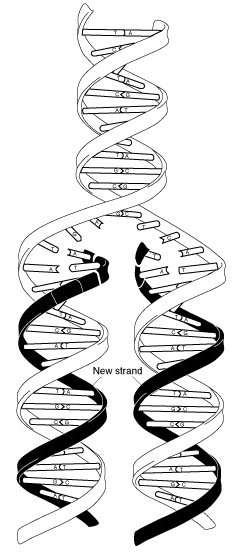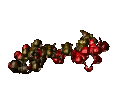E. F. Keller, The Century of the Gene, (2000)
![]()
Seven points: 1, 2, 3, 4, 5, 6, 7.

"Organisms, from daisies to humans, are naturally endowed with a remarkable property, an ability to make themselves."
Enrico Coen, 1999., pp. 98-99.
". . . genes had become by then become incontrovertibly real, material entities –the biological analogue of the molecules and atoms of physical science, endowed with the properties that would make possible, . . . by their combinations [explain] the living world."
Keller, pp. 2-3.
"It is only now, however, that we begin to fathom its depths, marveling not at the simplicity of life's secrets but at their complexity."
p. 8
"Underlying all of their differences were two enduring articles of faith."
1. "particulate hereditary elements serve as fundamental units of biological explanation.
2."intergenerational stability inhered in the fixity of these material elements, taken either as individual units or or their collective composition."
p. 18.
"The eye has rather special significance in the history of science. At least since Darwin's day, it has served as the exemplar of design–as a prototype of those 'organs of extreme perfection and complication' the formation of which has for so long defied scientific explanation. As Darwin himself acknowledged, 'To suppose that the eye, with all its inimitable contrivances. . . could have formed by natural selection, seems, I freely confess, absurd in the highest possible degree."
"Given this background, discovery of 'the master control gene' responsible for eye morphogenesis was news indeed." (Pax 6) causes eyes to form in fruit flies.
pp. 96-97.
 Histones are an essential protein in Eukaryotic DNA around which the double helix is coiled so that it is packed into the chromosomes.
Histones are an essential protein in Eukaryotic DNA around which the double helix is coiled so that it is packed into the chromosomes.
"...an alternative description–not master genes but 'master proteins' Coen writes, 'You can think of the binding site [on the DNA] as a sort of lock, and the matching protein as the key that fits it."
pp. 97-98.
The book's findings suggest otherwise:
1. The inadequacy of the "particulate materiality" of DNA as a sole explanation for inheritance, development, and natural selection. p. 53.
2. the collaboration of proteins during DNA & RNA replication for effective mitosis, metabolism, or meiosis. pp. 60-68.
3. “high fidelity" of genotype transcription.
4. the four functional factors of repair which proteins perform:
4.1} selection of nucleotides,
4.2} proofreading the code,
4.3} detection of a mismatch,
4.4} excision or removal of mistakes.pp. 28-29.
& "SOS response" repair system "one or more specific genes might be involved in the induction of error-prone modes of replication" which are "last-ditch efforts invoked to save the cell from going under."
p.33
Characterized by:
a. protein synthesis that allows replication to proceed,
b. generates diversity for its own sake (adaptability under stress?), but also "regulation of mutability," or "variability"pp. 34-36.
5. preservation of “evolvability,” and evolution as fortunate paring down among a variety of possible traits.
6. individuality, multicellularity and sex arise from a synthesis of
a. nucleic acid integrity and amino acid fidelity,
b. metabolic system of proteins for self-maintenance7. Facticity is instructive: "Unlike chromosomes, genes are not physical objects but are merely concepts that have acquired a great deal of historic baggage over the past decades." 1
William Gelbart, geneticist, quoted on page 67. [see also American Scientist review.]
"For if, as Gelbart suggests, the term gene may in fact have become a hindrance to the understanding of biologists, it has perhaps become even more of a hindrance to the understanding of lay readers, misleading as often as it informs."
"As a consequence, it shapes popular hopes and anxieties in ways that are often off-target, and in fact counter-productive to effective discussion of public policy even where the issues are real and urgent."
p. 148.
Seven points: 1, 2, 3, 4, 5, 6, 7.
![]()
Keller bases her argument, in part, on the works of William Gelbart and Peter Portin. For example Gelbart writes:
"For biological research, the twentieth century has arguably been the century of the gene. The central importance of the gene as a unity of inheritance and function has been crucial to our present understanding of many biological phenomena. Nonetheless, we may well have come to the point where the use of the term "gene" is of limited value and might in fact be a hindrance to our understanding of the genome. Although this may sound heretical, especially coming from a card-carrying geneticist, it reflects the fact that, unlike chromosomes, genes are not physical objects but are merely concepts that have acquired a great deal of historic baggage over the past decades."
William Gelbart (1998) Geneticist
Quoted in – http://www.natureinstitute.org/pub/ic/ic14/gene.htmAccording to geneticist Peter Portin, “The gene is no longer a fixed point on the chromosome, producing a single messenger RNA. Rather, most eukaryotic genes consist of split DNA sequences, often producing more than one mRNA by means of complex promoters and/or alternative splicing. Furthermore, DNA sequences are movable in certain respects, and proteins produced by a single gene are processed into their constituent parts.
Moreover, in certain cases the primary transcript is edited before translation, using information from different genetic units and thereby demolishing the one-to-one correspondence between gene and messenger RNA. Finally, the occurrence of nested genes invalidates the simpler and earlier idea of the linear arrangement of genes in the linkage group, and gene assembly similarly confutes the idea of a simple one-to-one correspondence between the gene as the unit of transmission and of genetic function....”
[Portin, P. 1993. The concept of the gene: Short history and present status. The Quarterly Review of Biology 68:173-223. ].
Molecular gene (genome) concept scientifically untenable.
Facticity, the quality or condition of being a fact, real, accurate, a condition that exists.
Gene frequency, http://www.genomicglossaries.com/content/gene_def.asp
retrotransposition, jumping genes
oncogenes, cancer inducing
This source book is: Evelyn Fox Keller, The Century of the Gene, published in 2000.
![]()
Diversity of Life | Triple Helix | Darwin | Dawkins | Margulis | Mayr | SCALES | DNA | Double Helix | Ehrlich | Dubos | Tattersall | Wilson
Genetics |Science Index | Analysis | Population Index | Global Warming Index | Nature Index | Brief